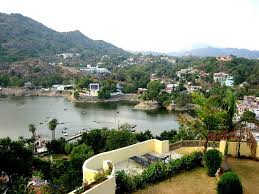Exploring the Allure of Mount Abu: Rajasthan’s Premier Hill Station

Introduction
Mount Abu, the only hill station in the desert state of Rajasthan, is a popular getaway for locals and tourists alike. Perched on the Aravalli Range at an elevation of about 1,220 meters, it offers a cool climate and lush greenery, making it a refreshing retreat away from the heat of the plains. Known for its scenic beauty, rich heritage, and diverse flora and fauna, Mount Abu is not just a tourist destination; it is a symbol of the rich cultural tapestry of India.
Main Attractions
Among its myriad attractions, the Dilwara Temples stand out as architectural marvels. Built between the 11th and 13th centuries, these Jain temples are famous for their intricate marble carvings. They attract not just devotees but also architecture enthusiasts from around the world. Another must-visit site is Nakki Lake, believed to have been dug by gods, offering boating facilities amidst tranquil surroundings.
The Guru Shikhar, the highest point in the Aravalli Range, provides breathtaking views of the surrounding landscape and is a popular trekking destination. The local wildlife sanctuary, home to an array of species, including sloth bears and leopards, adds to the eco-tourism appeal of the region.
Recent Developments
Recent efforts by the Rajasthan government to promote Mount Abu as a sustainable tourism destination have been gaining traction. Initiatives include enhancing infrastructure, promoting local handicrafts, and ensuring environmental conservation. The government has also launched campaigns to encourage off-season tourism, helping to increase footfall throughout the year.
Challenges and Considerations
Despite its allure, Mount Abu faces challenges such as the impact of over-tourism. Local authorities are keen on developing strategies to manage tourist inflow while preserving the natural beauty and cultural significance of the area. Educating visitors on responsible tourism practices is vital to protect this delicate ecosystem.
Conclusion
Mount Abu remains an important destination that balances heritage and natural beauty. Its significance to both environmental conservation and cultural appreciation makes it a unique spot in Rajasthan. As sustainability becomes a focal point in tourism, Mount Abu is poised for a transformation that may enhance its appeal without compromising its charm. For potential visitors, exploring Mount Abu now means not just enjoying its beauty but also joining in on its preservation story.








